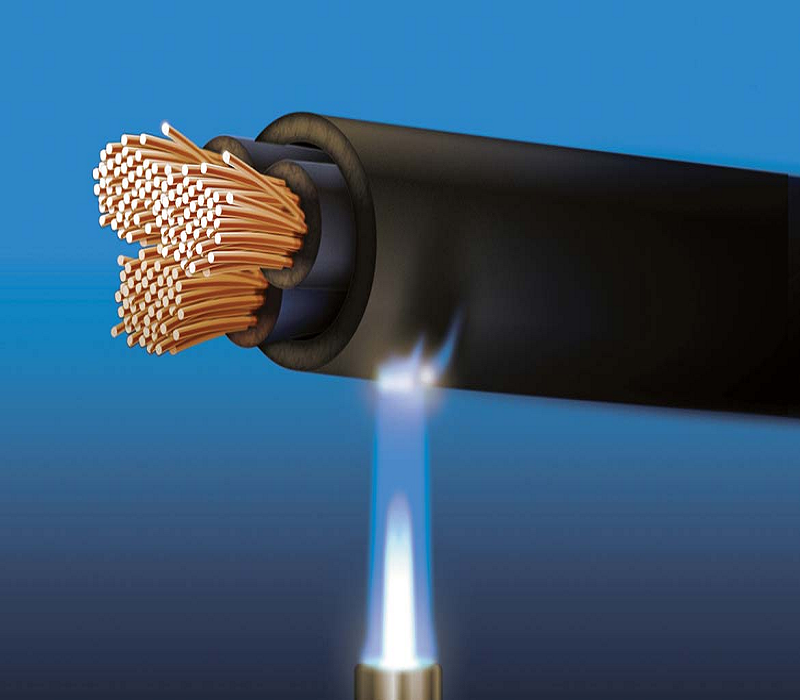With the enhancement of people’s safety awareness and the industry’s safety requirements, flame retardant cables and mineral fire-retardant cables gradually into the people’s line of sight, from the name of the understanding of flame retardant cables and fire-retardant cables have the ability to stop the spread of fire, but they have the essential difference.
Flame retardant cables are made of flame retardant materials, flame retardant sheaths and flame retardant fillers. Flame retardant cable means that after removing the fire source, the flame only spreads within the prescribed range, and can extinguish itself within the prescribed time, when there is a risk of being burned in a fire. So it can’t operate normally when it encounters a fire, but it can stop the fire from spreading, preventing the emergence of more serious consequences.
Fire resistant cables are in the ordinary cable in the PVC insulation and copper conductor between the increase of a layer of fire-resistant mica tape. Fire resistant cable can be burned in the flame of 750 ~ 800 ℃ for 3 hours, when a fire occurs, the mineral insulated cable will be ceramized by high temperature to protect the internal conductor, so that the cable can continue to supply power for a short period of time, to ensure the normal operation of the equipment in the line.
Through the above introduction, the two cables first of all in the material is different, and secondly in the event of a fire after the performance is also different, mineral fire cable can protect the internal conductor in the event of a fire, so that the cable can be normal work in a short period of time, so the mineral insulated cable is the true meaning of fire cable. The flame retardant cable can only prevent the fire from continuing to spread, and in the event of a fire can not work properly.
Applications: Flame retardant cables find widespread application across residential, commercial, and industrial settings, particularly prioritizing fire containment between compartments. Fire resistant cables are crafted explicitly for emergency lighting, fire alarm systems, and smoke evacuation systems. It is primarily employed in critical locations like hospitals, theaters, and high-rise buildings. In these environments, the reliability of operation during emergencies can even be life-saving.
Understanding these distinctions clarifies the selection criteria for either type based on the specific requirements of a building project. It emphasizes the importance of choosing the suitable fire resistant cable for the right application. The ultimate in improved safety and compliance with regulatory fire resistant cable standards.
Post time: Jul-16-2024


